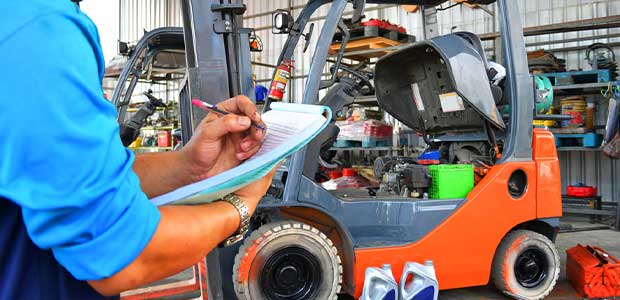
Everything You Need to Know About Forklift Safety
Understanding forklift safety could save lives.
- By Alex Saurman
- Sep 01, 2022
Walk into any warehouse, construction site or dock and you’ll likely see a forklift. These tools are used in workplaces all over the country and by a variety of workers. Although you can find multiple types of forklifts on the market or in the workplace, most of them share one common goal—to help workers move heavy items from one spot to another.
In a warehouse, a forklift might be used to move a pallet of items off a high shelf to a lower, workable area. On a construction site, a forklift might carry heavy timber to where the workers need it. And forklifts can also be used to load and unload items off and onto other vehicles, like a ship.
The use of forklifts is so common that in 2019, more than 1.4 million forklifts were sold globally. It’s also estimated that there are over 1.5 million forklift operators in the U.S. alone.
With forklifts being such a common tool and so many people using them, just how dangerous are they? Well, statistics show that they can be very dangerous. According to the Bureau of Labor Statistics, just over 9,000 workers were injured from forklifts in 2017. That same year, 74 workers died from injuries involving forklifts. Those workers needed an average of 13 days away from work.
Hazards Present
When working on or near forklifts, there are many hazards that can result in injury or illness. If a load is not balanced, rollovers can happen, leading to driver injury. If there are edges in the workplace, a driver can accidentally drive off of one. In 2017, the most common type of incident that led to nonfatal and fatal injury or illness was “non-roadway incidents involving motorized land vehicles.”
Pedestrians walking near a forklift are also at risk for injury. In 2017, 1,850 pedestrians were injured by forklifts. On average, the workers needed 20 days away from work.
There are a variety of factors that go into forklift incidents. According to the Canadian Center for Occupational Health and Safety, some of these are contributed to potential operator error, like driving too fast, not turning correctly or improper parking. The load can contribute to an incident as well. When items are not stacked well or the load is too heavy, this can have consequences on the driver and people around the forklift. Other factors like improper operator training and mechanical conditions can also lead to avoidable incidents.
This article originally appeared in the September 1, 2022 issue of Occupational Health & Safety.